One Woman Confronts Her Worst Nightmare During The Nepal Earthquake
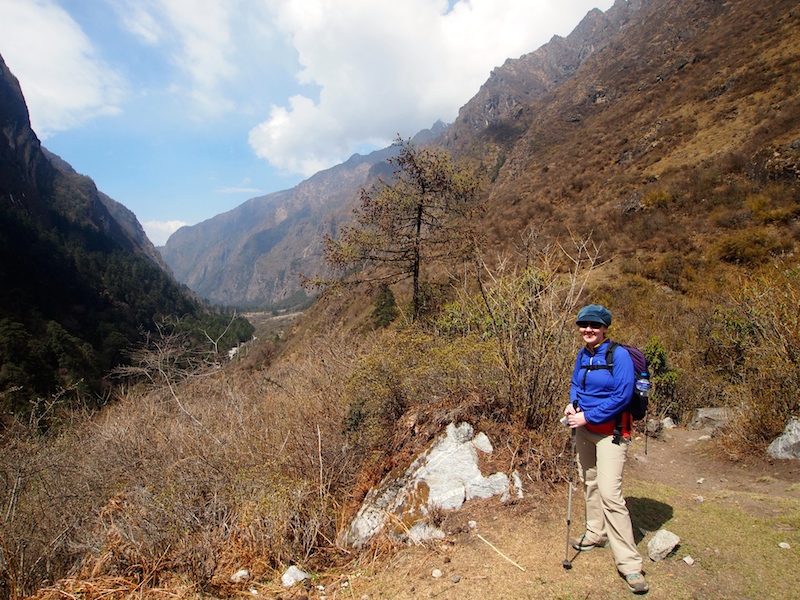
While living in Nepal’s over-crowded capital, Kathmandu, in 2013 and 2014, I was constantly afraid of experiencing what happened on Saturday, April 25: “the big one.” I am not generally a nervous traveller: I don’t assume that just because I am not at home that I am in any greater danger. I have never been overly afraid of being robbed, raped or murdered while travelling, just as I don’t spend undue time worrying about these things happening to me at home. But in Nepal, any little shudder from a passing vehicle, airplane overhead, or heavy footsteps on wooden floors made me tense.
My flatmate worked for the United Nations, and shortly after my arrival in August 2013 she told me about the training that all UN employees had to go through to prepare for the earthquake. I had heard that the risk of earthquakes in Nepal was high—the Himalayas are seismically active—but I hadn’t realised the magnitude of the risk before I got there. My flatmate had a walkie-talkie that she had to carry with her wherever she went, and check-in with the UN headquarters once a week.
She had an extensive first-aid kit that included syringes and all kinds of drugs that we wouldn’t know how to use if we had to. All UN staff members were meant to have their residences checked and approved by internal monitors to ensure that they were structurally sound (fortunately, we were told that our ground-floor apartment was about as good as they got in Kathmandu), and every few months they went through an earthquake preparedness drill.
I was upset to learn that my office—situated on the top floor of a brick building—didn’t have an evacuation plan, a first aid kit or other supplies for use in the case of an emergency.
I did some research into what “they” expected to happen in Nepal in the event of a major earthquake, and immediately wished that I hadn’t. The worst-case-scenario predictions were enough to encourage you to get on the first flight out of the country. In the event of a magnitude 8 earthquake, it was predicted that 100,000 people would die immediately in Kathmandu alone—a city with a population of a bit more than a million—and a couple of hundred thousand more in the following weeks, from injuries and diseases.
Kathmandu’s Tribuvan Airport—the country’s only international airport—was built on unstable land, and would likely liquefy in the event of a major earthquake. So would much of the rest of the city.
Kathmandu is overcrowded—partly because of the decade-long Civil War (1996-2006) that caused many Nepalis from the countryside to flee to the relatively safer capital—as well as geographically constrained, situated in a rare, flat mountain valley in Nepal’s mid-hills.
One Woman Confronts Her Worst Nightmare During The Nepal Earthquake.
As a result, much of the housing has been haphazardly and hastily constructed. A lot of the older buildings are made from locally-produced bricks, which—as the world has just witnessed—are not a solid building material in an earthquake-prone region. The worst-case-scenarios also warned that with roads from India destroyed, overland aid wouldn’t be able to reach the country.
What I found most chilling was the suggestion that news of the “big one” wouldn’t reach the outside world for over a day, maybe more. Reports would only trickle out that there had been a disaster of unimaginable proportions.
It didn’t help my confidence levels that two weeks after arriving, while at a bar in the tourist district of Thamel, we felt a tremor. The epicentre was in Tibet, to the north, and it didn’t cause any damage in Kathmandu, but it was an earthquake nonetheless. I had lived in Japan for a year and a half, so I was quite used to earthquakes, although I was always terrified of the initial jolt, the cracking sound, the subsequent sway.
What I found most chilling was the suggestion that news of the “big one” wouldn’t reach the outside world for over a day, maybe more.
Fortunately, these worst-case-scenarios haven’t quite played out like this, yet. Organisations that were working on improving earthquake preparedness in Nepal had to push these worst-case-scenarios as a way of prompting people into action. I was upset to learn that my office—situated on the top floor of a brick building—didn’t have an evacuation plan, a first aid kit or other supplies for use in the case of an emergency (retractable ladders, torches, spades). After talking to my boss about it, we had an earthquake safety briefing from an INGO whose job it was to raise awareness of what to do when the disaster hit. When, not if.
What I found most troubling was that the local people (as well as many expats, don’t get me wrong) didn’t understand what would actually happen in the event of a major earthquake. Many thought that if buildings collapsed, they would just die and there was nothing that could be done to stop it. I, too, was resigned to the fact that if I died immediately by being hit on the head with something, or crushed, then so be it—not a lot I could do about that. But the reality is that most people who experience earthquakes don’t die immediately.
Water is finite and shops are running out, and friends had helpfully advised me how long I could live by drinking pee.
They may be injured in a way that is treatable if tended to immediately, but to do so, adequate first-aid kits are needed. They may be completely uninjured but lose their house and possessions, thus requiring food and water supplies, or have to go to a camp (as is now the case for many people in Kathmandu) where diseases such as cholera may break out. So many earthquake-related fatalities can be prevented with adequate supplies and preparation from the authorities.
Sanitation in the makeshift camps that people are currently staying in is now rapidly deteriorating. I have many friends still in Kathmandu, Nepalis and foreigners. We foreign women in Kathmandu were rarely concerned about our physical safety in most respects—we would often “joke” that the only thing to fear while walking home tipsy in the middle of the night were the street dogs—but the disaster that just happened, and is still unfolding, dwarfs the normal female traveller’s fear over theft or assault.
But the reality is that most people who experience earthquakes don’t die immediately. They may be injured in a way that is treatable if tended to immediately, but to do so, adequate first-aid kits are needed.
Annie Seymour, a British yoga teacher in Kathmandu, has been helping with emergency operations, and posting Facebook updates that break my heart. I have been overcome with sadness the past few days, seeing the destruction to the city and in the mountains. Her latest update has turned that useless sadness into something much more powerful and dangerous—anger:
My throat has been burning for the past few days. At first I thought it was dehydration. Water is finite and shops are running out, and friends had helpfully advised me how long I could live by drinking pee. Impressively long, but still: I’d decided that rationing would be my preferred route. But with the volunteering gig I’ve been hydrating well, yet the sharp throat remained. It took a while to realise it was hurting not because of my low intake of water, but because of my high intake of school. I have been inhaling too much school, too much temple, too much home. We have not evolved to breathe in buildings, and they cut.
Health is becoming a major concern in the city. In the affected rural districts, everything remains critical. Everything. But in the city, health is the worry. We’re currently however in a period of grace – a quite lovely pause between the physical and psychological pounding of the quakes, and the sanitation conditions are becoming a health crisis. For now, the quakes seem to have settled and disease has not reached a tipping point. It is estimated that we will have this grace period for 48 hours. My throat is not at the top of the health agenda.
At least 60,000 people have moved through Ratna Park – the main yet small central open space – anxious for help. This is roughly equivalent to 60,000 people heading to London Fields, desperate to escape catastrophe in the city, except that instead of being able to pop into a gastropub to poop, they all have the indignity of doing it in a rapidly expanding and open corner of the park. And then a huge pre-monsoon rain comes as it did yesterday, the kind which the soil can’t absorb fast enough and causes everything to float and spread. And in all of this—and Ratna Park is only the biggest of many tent cities in Kathmandu—they have been let down: there are in fact no facilities to help.
Unless something really horrifying and media-sexy happens like cholera, we will inevitably be dropped from the international radar.
They go through it all, patiently waiting, making themselves available, coordinating themselves ready for the national plan to swing into action, and so far the only service provided has been a tanker allowing one person at a time to fill a small canteen of water. I am trying to reign in my anger at the authorities for allowing this to happen, along with so many other atrocities such as more aid planes being turned away because of mal-coordination at the airport and the stunning absence of even a plan for support to the rural areas and those trapped in the mountains – because who am I?
I don’t know what’s going on behind the scenes or the complications they face. But from my vantage point, the leadership seems as confused as me about how to help. It is inexcusable and it is criminal when the national government seems as confused as a yoga teacher on how to protect its citizens from a well-predicted threat.
I know that our case is still in the papers and I know that soon it won’t be. Unless something really horrifying and media-sexy happens like cholera, we will inevitably be dropped from the international radar. That’s life. We get it. So what happens now will decide how this plays out for us here over the next few weeks and months.

Nepal Earthquake: One Woman Confronts Her Worst Nightmare photo credits by Elen Turner.

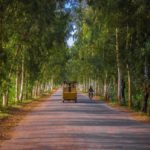


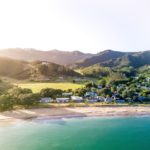

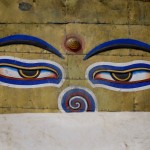
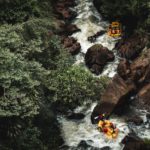
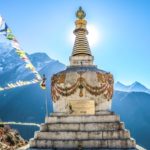
One thought on “One Woman Confronts Her Worst Nightmare During The Nepal Earthquake”